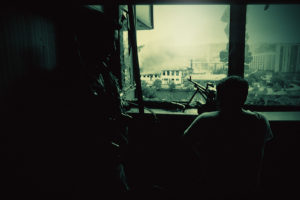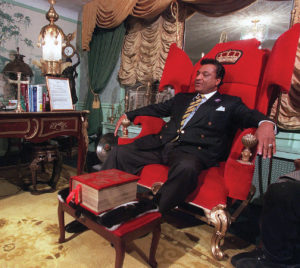Back in the 1830, a Reverend Beckwith gave an address in which he criticized Christian participation in bloodshed. He gave an example. He wrote:
“…the indignant [Turkish] Mussulman, replied, ‘Look yonder,’ pointing to Calvary. ‘There, Sir, on the very spot where your own Lord poured out his blood, has the Mohamedan been obliged to interfere to keep Christians from butchering one another…'”
Do you know what historical event Rev. Beckwith was referring to here? When did the Muslims intervene to prevent Christians from butchering other Christians? The even had to have preceded the address, which meant the event in question occurred before 1837, which was the date of his address.
I am not aware of any event during the Crusades that fit this description. Crusaders did occasionally have “tussles” with one another, but never did they have a civil war inside Jerusalem between Christians.
Phil
Reference: “Rev. Mr. Beckwith’s Address,” The Advocate of Peace (Boston: Whipple & Damrell, June 1837), pp. 38–40.)
? ? ?
Dear Phil,
Christian-on-Christian violence is older than the Crusades, with even the first Crusaders slaughtering non-Catholic indigenous Christians alongside the Muslims in the course of taking Jerusalem in July 1099—and let’s not forget the cynical sack of Constantinople in 1204. What the Turkish Muslim was specifically referring to, however, was something more recent and close to home. After the Middle East came under Ottoman rule, the Turks carried on with a policy of keeping holy places open to “people of the book,” but also found themselves caught between the Catholic and Orthodox camps. In 1555 Franciscans renovated the Church of the Holy Sepulchre, touching off a fresh round of dispute over control of the church. The Sublime Porte issued a series of firmans (decrees) on one side or the other, which were often the target of bribery and occasional bloody riots between partisans of the two Christian denominations. The matter was among those subject to negotiations in the Treaty of Karlowitz in 1699. Finally, fed up with the intermittent violent clashes, the Porte issued a firman in 1767 that physically divided the Church of the Holy Sepulchre between the two man claimants.
It is probably to this issue to which Revs. Beckwith and Wolff referred, but that would not be the end of the matter. Renewed disputes over other holy sites between Catholics and Orthodox in 1852 led Emperor Napoleon III to send a warship up the Dardanelles and compel the Sultan to recognize France as protector of Christian (i.e. Catholic) interests in Jerusalem. This provoked a reaction from the Orthodox Church’s protector, Russia, which invaded Moldavia and Wallachia, touching off a war. Nervous at the prospect of rival Russia taking over more territories from a shaky Ottoman Empire, France and Britain rushed to its aid in 1853, starting the two-year bloodbath in the name of “balance of power” that has come to be known as the Crimean War.
Sincerely,

Jon Guttman
Research Director
World History Group
More Questions at Ask Mr. History
Don’t miss the next Ask Mr. History question! To receive notification whenever any new item is published on HistoryNet, just scroll down the column on the right and sign up for our RSS feed.




